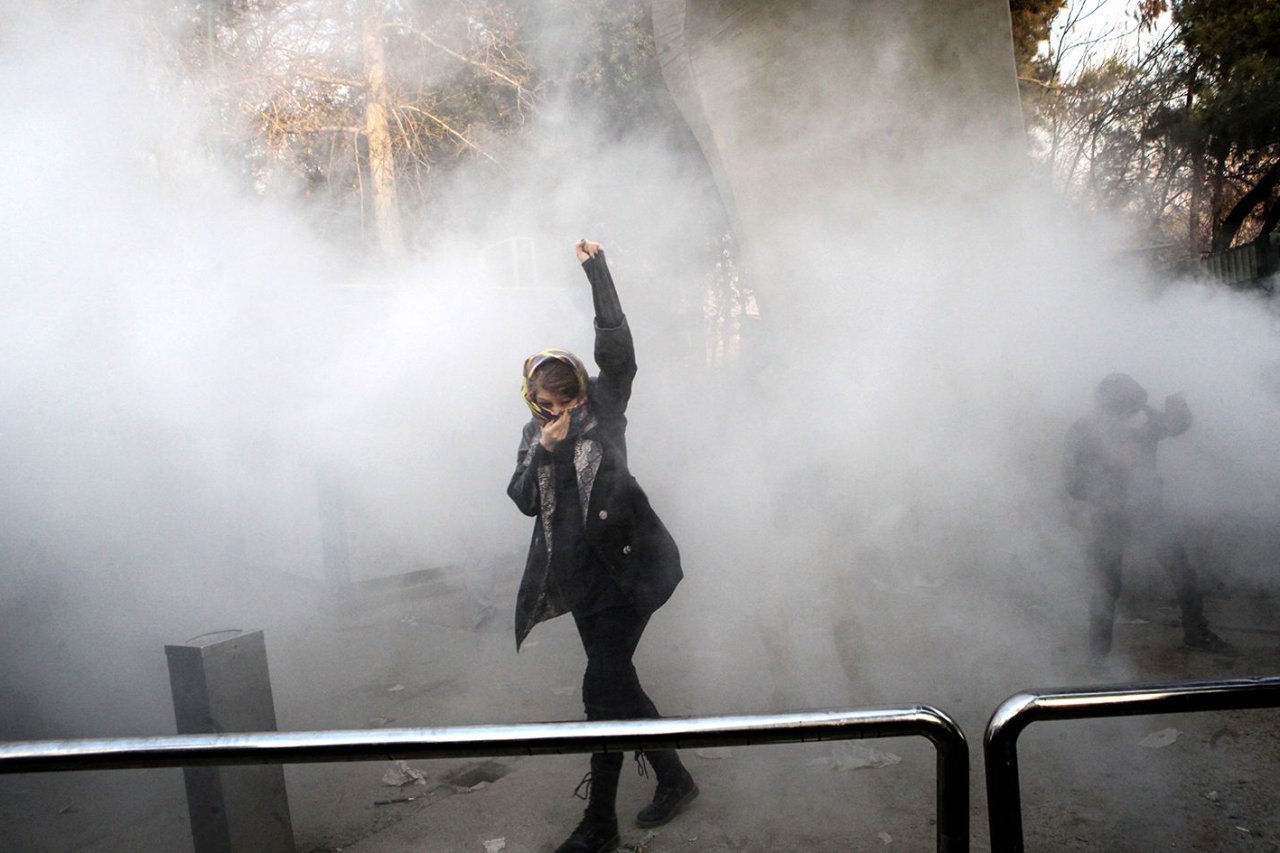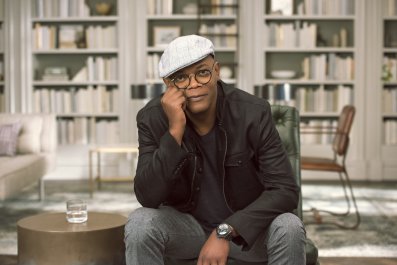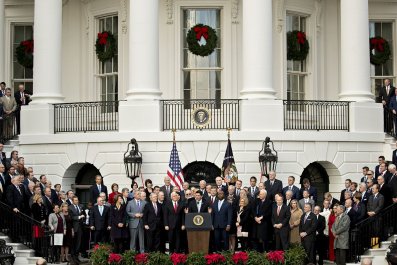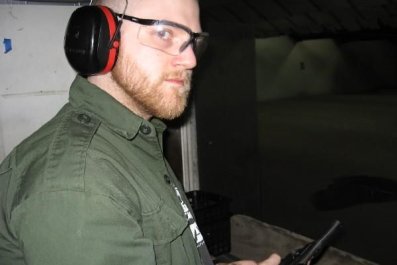Few saw it coming.
On December 28, protests erupted in Mashhad, Iran's second largest city, as thousands took to the streets to complain about the country's lousy economy. The demonstrations were unorganized and spontaneous, but they quickly spread nationwide—and morphed into something bigger, more profound. Something that targeted Iran's president, Hassan Rouhani, and its supreme leader, Ayatollah Ali Khamenei. The unrest, which was still roiling as Newsweek went to press, marked the third time in three decades that Iranians have demonstrated en masse against the theocratic regime in Tehran.
The protests are the first fast-moving foreign crisis of Donald Trump's presidency. When they began, the New York real estate mogul was at his Florida resort, Mar-a-Lago, golfing and relishing his lone legislative victory—the tax bill he signed on December 22. The administration—and the intelligence community—didn't anticipate the chaos, says a national security official, who, like others who spoke to Newsweek, isn't authorized to speak publicly about the matter. Trump's first instinct was to support the unrest, and he acted on it almost immediately. "Big protests in Iran," he tweeted on December 31. "The people are finally getting wise as to how their money and wealth is being stolen and squandered on terrorism. Looks like they will not take it any longer. The USA is watching very closely for human rights violations!"
His response wasn't surprising. On the campaign trail and in the Oval Office, Trump has tried to distance himself from the policies of his predecessor, Barack Obama (much like Obama did with his predecessor, George W. Bush). Trump has been withering in his criticism of the Iranian nuclear deal and the Obama administration's lack of initial public support for protesters during the 2009 Green Revolution in Iran, which began in response to what the demonstrators believed was a stolen presidential election.
The hard part came after Trump's initial tweet. As the protests continued, the administration had to figure out what, if anything, to do. Trump is still struggling with that question, in part because the crisis came as he was trying to overhaul Obama's Iran policies. In October, the president "decertified" the nuclear accord but didn't blow up the deal. He waived the reimposition of sanctions, which the Obama administration had lifted in exchange for Iran halting its nukes program. Trump wanted to get the U.S.'s European allies to help pressure Tehran to renegotiate parts of the agreement—an effort the Europeans have resisted. Now, Trump is considering scrapping the deal entirely unless Congress passes a bipartisan bill to reimpose sanctions on Tehran if it gets within a year of deploying a nuke.
The chaos in Iran changes the administration's calculus. If the Iranian government cracks down on the protesters harder than it has to date, the White House believes Congress would easily pass the legislation the administration wants. But the Trump team is willing to see how events unfold before making a final decision.
Economics is also a key factor in the White House's approach. Given the issue that sparked the protests, reinstalling painful sanctions "would be shooting ourselves in the foot," a State Department official says, by hurting the average citizens who have taken to the streets. It might make those protesters angrier, and it might also allow Tehran to deflect some of the blame toward the United States. To avoid that, the administration wants to reimpose just the sanctions that target only people or companies closely linked to the regime. It started this process in December, when the Treasury Department began enforcing measures against the Iranian Republican Guard Corps, Iran's elite military unit. Now, among other options, the administration's Iran team—led by Trump's national security adviser, H.R. McMaster—may focus on a single corporation, a $95 billion holding company called Eiko, which has significant stakes in everything from oil and gas to telecommunications and finance. The company ultimately answers to Khamenei, the supreme leader, and when Iran signed the nuclear deal, the U.S. and its allies relaxed sanctions against Eiko and several companies thought to be fronts for Tehran.
Beyond that move, Trump administration officials acknowledge they're in a bind. The Iranian regime has been relatively restrained in its response to the demonstrations. As of January 5, 21 people had been killed in skirmishes with security forces, most of them demonstrators. But if Tehran uses massive force to put down the demonstrations—akin to what it did in 2009 or, worse, what the Chinese government did in Tiananmen Square in 1989—White House officials acknowledge that the U.S. will punish Tehran economically, even if that means hurting average Iranians—including the working class, which has led the current demonstrations. "[Administration officials] have to be hoping they don't get to the point where the politically dutiful thing to do gets in the way of smart policy," says Ray Takeyh, an Iran analyst at the Council on Foreign Relations, a New York–based think tank.
So far, the administration has been careful to avoid any loose talk of "regime change." Last summer, Secretary of State Rex Tillerson testified before Congress that the White House supports "those elements inside of Iran that would lead to a peaceful transition of government." The administration says the unrest lines up with Tillerson's statement, proving that many Iranians yearn for peaceful change in their leadership. The administration is thinking about ways to help demonstrators keep communications lines open—including popular social media applications, such as Telegram and Instagram, which the regime has shut down. But Trump's people insist they are not aiming to topple the government in Tehran. "[They] aren't doing an Iraq here—don't worry about that. There's absolutely zero appetite for that," says an adviser to the administration.
Prior to the unrest, however, the Defense Department was trying to figure out ways to confront what it sees as Iranian expansionism in the region—part of the administration's move back toward Washington's traditional support of Sunni allies in the Middle East. In early December, Defense Secretary James Mattis—who in 2013 stepped down as head of the U.S. military Central Command in part because he clashed with Obama administration officials over Iran—asked his department to push back against Tehran in places like Yemen, Syria and Iraq without triggering an outright war with Iran.
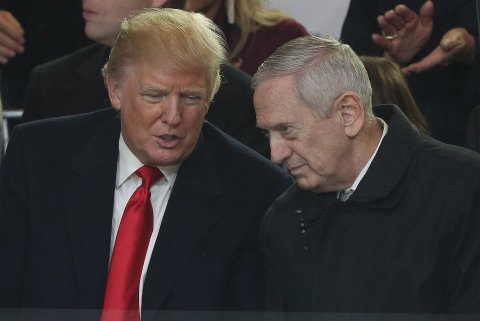
The administration, many analysts believe, needs to be careful in this battle for regional supremacy. Michael Rubin of the American Enterprise Institute, a Washington, D.C.–based think tank, says the United States needs to avoid even indirect responsibility for the deaths of Iran's foreign fighters. "Very little in recent history did more to sour the Iranian people on the U.S. than when we supported Iraq in [the eight-year war] with Iran in the 1980s," he says. "If body bags start coming home and the government can plausibly blame us, it will instantly burn away the good will our rhetorical support has engendered with the protestors."
Mattis and McMaster—the two key figures trying to guide Trump through this crisis—are no friends of Tehran. Both were in Iraq when Iranian-trained militias and Iranian-made improvised explosive devices killed and maimed U.S. servicemen there. And as the principal architects of Trump's Middle East policy, they also sense opportunity. The Iranian government instantly blamed the protests on "foreign actors"—by which it meant the United States, Saudi Arabia and Israel. They offered no proof of that, and none will likely come. Few outside the Iranian government dispute that the anger spreading throughout country is homegrown. But one of the demonstrators' most frequent complaints, to the regime's surprise, could be called Iran First: They want their government to stop spending the country's money and resources on foreign military adventures. The U.S. supports that message too, and the generals around Trump want see if Tehran bows to those demands.
For now, Mattis and McMaster seem to be in control of the administration's thinking on Iran, with Tillerson keeping European allies informed. So far, their mercurial boss hasn't done or tweeted anything outrageous. Indeed, as the unrest in Iran grew in early January, Trump seemed more preoccupied by Fire and Fury, a scathing new book about his first year in the White House. And though none of the principals would say it, that's probably a good thing.



